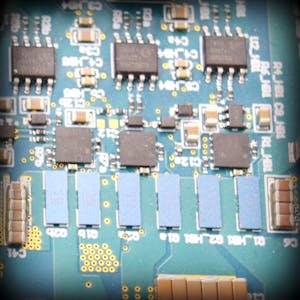Showing posts with label Opamp. Show all posts
Showing posts with label Opamp. Show all posts
what are the failure mode of Op-Amp ?
what are the failure mode of Op-Amp ?
 Reviewed by Author
on
4/29/2023
Rating: 5
Reviewed by Author
on
4/29/2023
Rating: 5
 Reviewed by Author
on
4/29/2023
Rating: 5
Reviewed by Author
on
4/29/2023
Rating: 5
MCQ(Multiple Choice questions) on Op-Amp Practical Applications: Design Simulation and Implementation
MCQ(Multiple Choice questions) on Op-Amp Practical Applications: Design Simulation and Implementation
![MCQ(Multiple Choice questions) on Op-Amp Practical Applications: Design Simulation and Implementation]() Reviewed by Author
on
9/11/2021
Rating: 5
Reviewed by Author
on
9/11/2021
Rating: 5
TI Precision Labs- Instrumentation amplifier topologies: two amp theory
TI Precision Labs- Instrumentation amplifier topologies: two amp theory
 Reviewed by Author
on
7/02/2021
Rating: 5
Reviewed by Author
on
7/02/2021
Rating: 5
 Reviewed by Author
on
7/02/2021
Rating: 5
Reviewed by Author
on
7/02/2021
Rating: 5
Operational Amplifier: Non-Inverting Op-Amp and Op-Amp as Buffer (Op-Amp as Voltage Follower)
Operational Amplifier: Non-Inverting Op-Amp and Op-Amp as Buffer (Op-Amp as Voltage Follower)
 Reviewed by Author
on
3/09/2020
Rating: 5
Reviewed by Author
on
3/09/2020
Rating: 5
 Reviewed by Author
on
3/09/2020
Rating: 5
Reviewed by Author
on
3/09/2020
Rating: 5
Operational Amplifier: Inverting Op Amp and The Concept of Virtual Ground in Op Amp
Operational Amplifier: Inverting Op Amp and The Concept of Virtual Ground in Op Amp
 Reviewed by Author
on
3/09/2020
Rating: 5
Reviewed by Author
on
3/09/2020
Rating: 5
 Reviewed by Author
on
3/09/2020
Rating: 5
Reviewed by Author
on
3/09/2020
Rating: 5
Introduction to Operational Amplifier: Characteristics of Ideal Op-Amp
Introduction to Operational Amplifier: Characteristics of Ideal Op-Amp
 Reviewed by Author
on
3/09/2020
Rating: 5
Reviewed by Author
on
3/09/2020
Rating: 5
 Reviewed by Author
on
3/09/2020
Rating: 5
Reviewed by Author
on
3/09/2020
Rating: 5
Current Sense Amplifiers: Common-Mode Rejection Ratio
Search TI current sense amplifiers, and find reference designs and other technical resources. http://www.ti.com/amplifier-circuit/c... Th...
Current Sense Amplifiers: Common-Mode Rejection Ratio
 Reviewed by Author
on
12/28/2019
Rating: 5
Reviewed by Author
on
12/28/2019
Rating: 5
 Reviewed by Author
on
12/28/2019
Rating: 5
Reviewed by Author
on
12/28/2019
Rating: 5
Current Sense Amplifiers: Power Supply Rejection Error
Search TI current sense amplifiers, and find reference designs and other technical resources. http://www.ti.com/amplifier-circuit/c... Le...
Current Sense Amplifiers: Power Supply Rejection Error
 Reviewed by Author
on
12/28/2019
Rating: 5
Reviewed by Author
on
12/28/2019
Rating: 5
 Reviewed by Author
on
12/28/2019
Rating: 5
Reviewed by Author
on
12/28/2019
Rating: 5
Current Sense Amplifiers: Shunt Resistor Tolerance Error
Learn more about shunt resistor tolerance error and how to minimize its effects in a current sensing application. Ask questions and inter...
Current Sense Amplifiers: Shunt Resistor Tolerance Error
 Reviewed by Author
on
12/28/2019
Rating: 5
Reviewed by Author
on
12/28/2019
Rating: 5
 Reviewed by Author
on
12/28/2019
Rating: 5
Reviewed by Author
on
12/28/2019
Rating: 5
Troubleshooting Tips: Op Amps - Output Swing
Understanding how to verify datasheet specifications such as input voltage offset is critical to the application troubleshooting and debug...
Troubleshooting Tips: Op Amps - Output Swing
 Reviewed by Author
on
12/15/2019
Rating: 5
Reviewed by Author
on
12/15/2019
Rating: 5
 Reviewed by Author
on
12/15/2019
Rating: 5
Reviewed by Author
on
12/15/2019
Rating: 5
Designing with comparators : low-side current sensing solutions
How to design a low side, precision current sensing solution using the INA185 and the TLV4041R2. The video describes what makes th...
Designing with comparators : low-side current sensing solutions
 Reviewed by Author
on
11/05/2019
Rating: 5
Reviewed by Author
on
11/05/2019
Rating: 5
 Reviewed by Author
on
11/05/2019
Rating: 5
Reviewed by Author
on
11/05/2019
Rating: 5
Designing with comparators : high-side current sensing solutions
How to design a high side current sensing solution using the TLV1701. Key comparator specifications such as input offset voltage, supply...
Designing with comparators : high-side current sensing solutions
 Reviewed by Author
on
11/05/2019
Rating: 5
Reviewed by Author
on
11/05/2019
Rating: 5
 Reviewed by Author
on
11/05/2019
Rating: 5
Reviewed by Author
on
11/05/2019
Rating: 5
Ideal Operational Amplifier
The features of an ideal operational amplifier (OpAmp) and shows how these can be used to analyze the inverting and non-inverting amplifier...
Ideal Operational Amplifier
 Reviewed by Author
on
10/31/2019
Rating: 5
Reviewed by Author
on
10/31/2019
Rating: 5
 Reviewed by Author
on
10/31/2019
Rating: 5
Reviewed by Author
on
10/31/2019
Rating: 5
What is Serial Digital Interface (SDI)?
What is Serial Digital Interface (SDI)?
 Reviewed by Author
on
5/17/2019
Rating: 5
Reviewed by Author
on
5/17/2019
Rating: 5
 Reviewed by Author
on
5/17/2019
Rating: 5
Reviewed by Author
on
5/17/2019
Rating: 5
Op Amps: Current Feedback Amplifiers - Spice Simulation
Op Amps: Current Feedback Amplifiers - Spice Simulation
 Reviewed by Author
on
3/26/2019
Rating: 5
Reviewed by Author
on
3/26/2019
Rating: 5
 Reviewed by Author
on
3/26/2019
Rating: 5
Reviewed by Author
on
3/26/2019
Rating: 5
Op Amps: Slew Rate
Learn about large and small signal analysis, slew boost, slew rate over temperature, slew rate vs. full power bandwidth, and more. ...
Op Amps: Slew Rate
 Reviewed by Irawen
on
10/15/2018
Rating: 5
Reviewed by Irawen
on
10/15/2018
Rating: 5
 Reviewed by Irawen
on
10/15/2018
Rating: 5
Reviewed by Irawen
on
10/15/2018
Rating: 5
Op Amps: Input and Output Limitations
Learn about the two major contributors of DC op amp input errors, input voltage offset (Vos) and input bias current (Ib). ...
Op Amps: Input and Output Limitations
 Reviewed by Irawen
on
10/15/2018
Rating: 5
Reviewed by Irawen
on
10/15/2018
Rating: 5
 Reviewed by Irawen
on
10/15/2018
Rating: 5
Reviewed by Irawen
on
10/15/2018
Rating: 5
Subscribe to:
Comments
(
Atom
)
Popular Posts
-
Electric Machines, now in its 5" edition, is intended for third and fourth year UG students and first year PG students of electrical ...
-
If you’ve ever designed a PCB, powered it up, and watched nothing happen—or worse, seen it behave unpredictably—you know how wide the gap ...
-
Pull-up and pull-down resistors are among the simplest components on a schematic—but choosing the right value and package is far from tr...
-
Introduction Power electronics has undergone tremendous evolution over the past few decades, particularly in medium and high-power conver...
-
This best-selling text employs a theoretical, practical, multidisciplinary approach to provide introductory students with a broad understa...
-
This new edition combines the traditional areas of electric machinery with the latest in modern control and power electronics. It includes...
-
"Power Electronics" by P.S. Bimbhra is a widely used textbook, especially among electrical engineering students in India. It’s ...
-
The World's #1 Guide to Power Supply Design_Now Updated! Recognized worldwide as the definitive guide to power supply design for over 2...
-
Step into the world of ESD and TVS protection. Get the basics and identify selection criteria parameters and protection typologies. In thi...
-
Learn more:https://www.murata.com/en-global/prod... What is the relationship between the oscillation characteristics and the oscillation c...

.png)






















